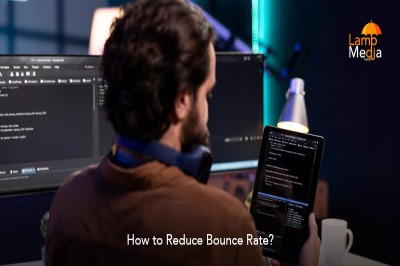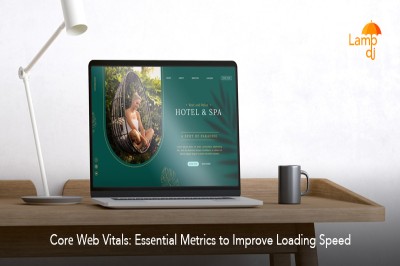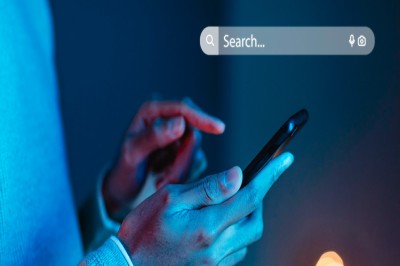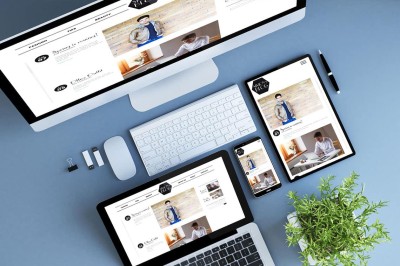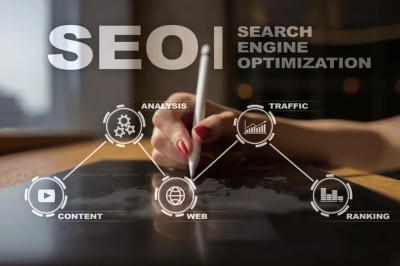How to Use Color Psychology in Web Design

Color plays a powerful role in our everyday experiences. From affecting emotions to guiding actions, colour psychology is a fundamental tool in creating user-friendly web designs. Whether your business is a web design professional, an SEO firm in Dubai, a digital marketing agency in Dubai, or another entirely different, knowing how colours affect the visitor experience can make all the difference between a high bounce rate and a website that retains visitors. Let's investigate the foundations of colour psychology in web design and how best to apply it.
Understanding Colour Psychology
Colour psychology is the study of colour effects on emotions and perceptions. Various colours can arouse distinct emotions and connections, which site designers can leverage to produce the intended response or atmosphere for users. Blue, for example, usually denotes confidence and peace; crimson can inspire passion and urgency.
Colour psychology finds use in web design in:
Colours may capture the personality and values of a brand. Regular application of colours in line with the message of the brand enhances brand recall.
Colours can highlight important components, such call-to- action (CTA) buttons, so directing user activity.
Different colours create different emotions that might affect visitors' perspective of and interaction with a website.
Important Colours: Their Psychological Effects
Some often used colours in web design and their psychological impact are broken out here:
Often employed by tech and financial firms to convey security, professionalism, and trust, blue stands for This colour is soothing and fits designs where you like users to be comfortable.
Red is a high-energy colour that motivates activity and stirs emotions. Often featured in urgent offers or clearance discounts, red exudes urgency and enthusiasm.
Green is connected with environment, health, and development. For companies who support environmental friendliness or well-being, it's perfect.
Yellow: A happy, striking colour. On a website, yellow is great for generating a friendly or welcoming environment.
Black is a stylish and strong colour frequently seen in luxury goods. It speaks authority, grace, and professionalism.
White is a great choice for establishing space and clarity on a page since it is known for simplicity and neatliness.
How may colour psychology be applied in web design?
Select Colours Reflecting Your Brand
Selecting a colour pallet that fits the personality and values of your business is the first stage in using colour psychology in web design. If you own a green company, for example, your website may mostly use green colours. Alternatively, black and gold would be preferred by a Best Web Design Company in Dubai trying to convey elegance and sophistication.
Emphasise important elements via contrast.
In web design, contrast is quite important since it enhances readability and helps to highlight significant parts. To draw the user in, CTA buttons—for instance—should contrast with the background. A Dubai digital marketing business could highlight contact forms or consultation buttons using opposing colours.
Here's a brief advise: For visually appealing high contrast without overloading the viewer, utilise complementary colors—that is, colours opposite each other on the colour wheel.
Correspondence Colours with Content Objectives
Consider what you want users on every page of your website to experience. Are you trying to thrill, soothe your audience, or establish trust? Every section's colour choices should complement these objectives. As follows:
On pages like About Us or Service pages for a Dubai SEO company, where dependability and trust rule supreme, use blue.
For discount banners or special promotions where urgency is paramount, choose red or orange.
Think about color's cultural meanings.
distinct societies have distinct colour connotations, hence it is crucial to take background of your target audience into account. For local businesses or services that want to highlight development and well-being in the UAE, for instance, green is typically connected with success and spirituality and makes a pleasing choice.
Using colours that are not only aesthetically pleasing but also culturally relevant, a Best Web Design Company in Dubai that recognises these cultural quirks will be more able to relate to their target market.
Use Colour to Create Hierarchy
Establishing a visual hierarchy with colour helps users of your site traverse it more naturally. Emphasise main actions like "Buy Now" or "Sign Up," using a striking, eye-catching colour that grabs the page. Simultaneously, a lighter shade can help to balance out secondary actions like "Learn More" or "Contact Us." This clarifies users' path across the site.
Balance Boldness with Subtlety
Though strong colours can be striking, too much intensity could overwhelm consumers. One can avoid this using soft, neutral backgrounds or subdued colour gradients. For backdrop colours, neutral tones such as greys and whites are quite good since they let more vivid parts to shine. While stressing CTAs with brighter colours, many SEO firms in Dubai utilise white or light-colored backgrounds to provide a neat, professional look.
Include colour psychology into graphics and images.
Images and visuals have great impact on the tone of your website independent of text or button colour. Choosing photos with colours that complement the colour palette of your brand helps to accentuate your message and produces a coherent experience. A digital marketing agency in Dubai, for example, emphasising modernism could use blue and silver tones to suggest dependability and creativity.
Testing and Changing Your Scheme of Colours
Using colour psychology into site design is not a one-time endeavour. Maximising your design depends on testing several colour combinations and seeing user reactions. Here A/B testing can be a useful tool since it lets you test combinations of CTA button colours, background tones, or accent colours to find which ones appeal more to your audience.
Track statistics including bounce rate, time on page, and conversion rate to also see how colour affects user involvement. Based on the data, change a colour scheme if one is not working. This iterative process guarantees that your design fits your brand objectives as well as user expectations.
Successful colour psychology examples for web design
Examining industry-specific examples can be quite instructive. Companies use colour in the following few ways rather successfully:
E-commerce sites like Amazon have orange "Add to Cart" buttons. Orange is connected with energy and action, thereby motivating consumers to finish purchases.
Many health brands suggest serenity, cleanliness, and well-being by including whites and greens, which also represent This fits the ideal of care and purity.
Finance and Technology: Blue is a prevalent colour on tech and financial websites since it exudes security, stability, and confidence.
Inspired by these models, a Best Web Design Company in Dubai can modify them to the local culture and brand specifications for best efficacy.
Conclusion: Using colour psychology to improve user experience
In web design, colour psychology is a useful tool that, with proper application, may direct users, affect emotions, and generate conversions. Your website may really engage consumers meaningfully and leave lasting memories by selecting colours that fit your brand, knowing contrast, and changing your palette to fit cultural tastes.
Whether your brand is trying to maximise your website, you are a digital marketing firm in Dubai, an SEO company in Dubai, or any brand looking to create a user experience that connects by including colour psychology. Start by assessing your current colour selections, thinking about the psychological effects of every colour, and be open to trying different combinations to see what most appeals to your audience. With the right color strategy, you can transform your website into a powerful tool for engagement and brand recognition.
























